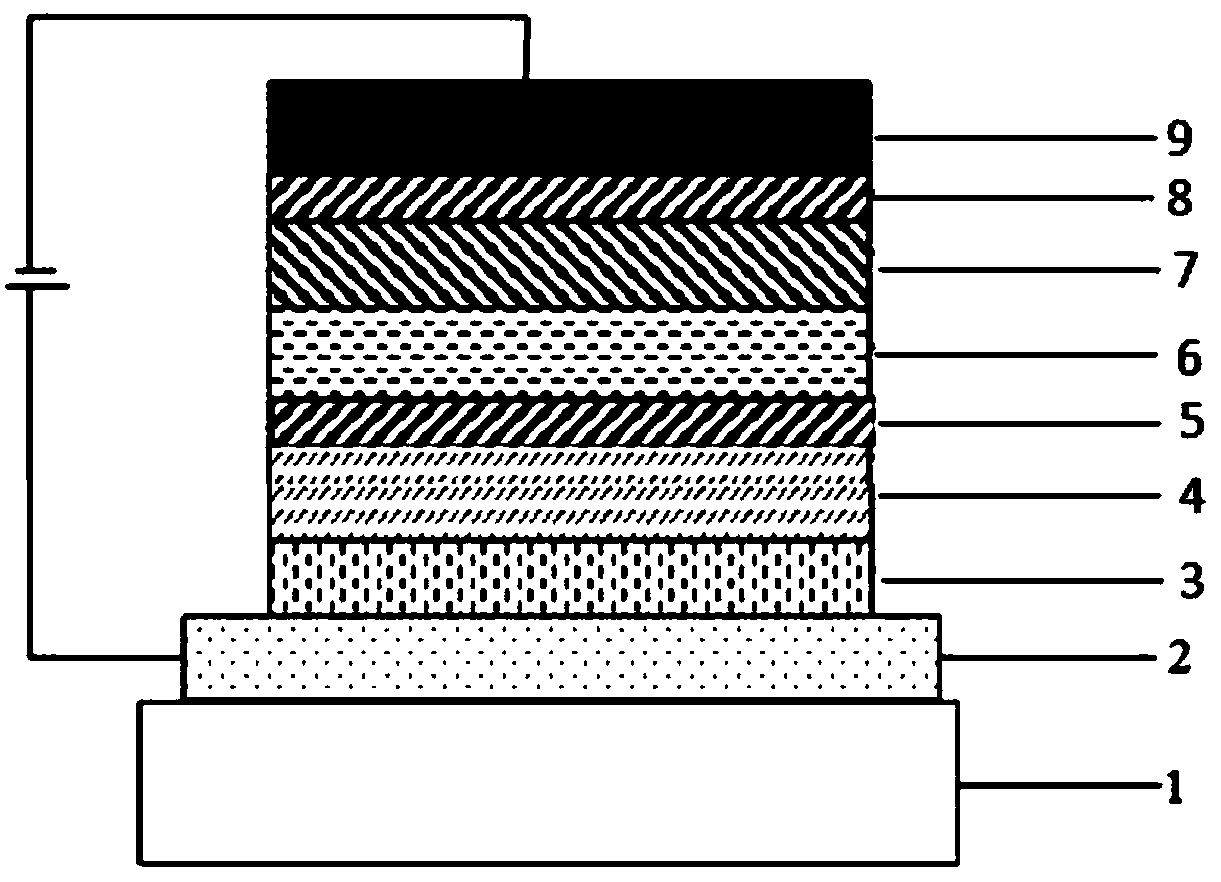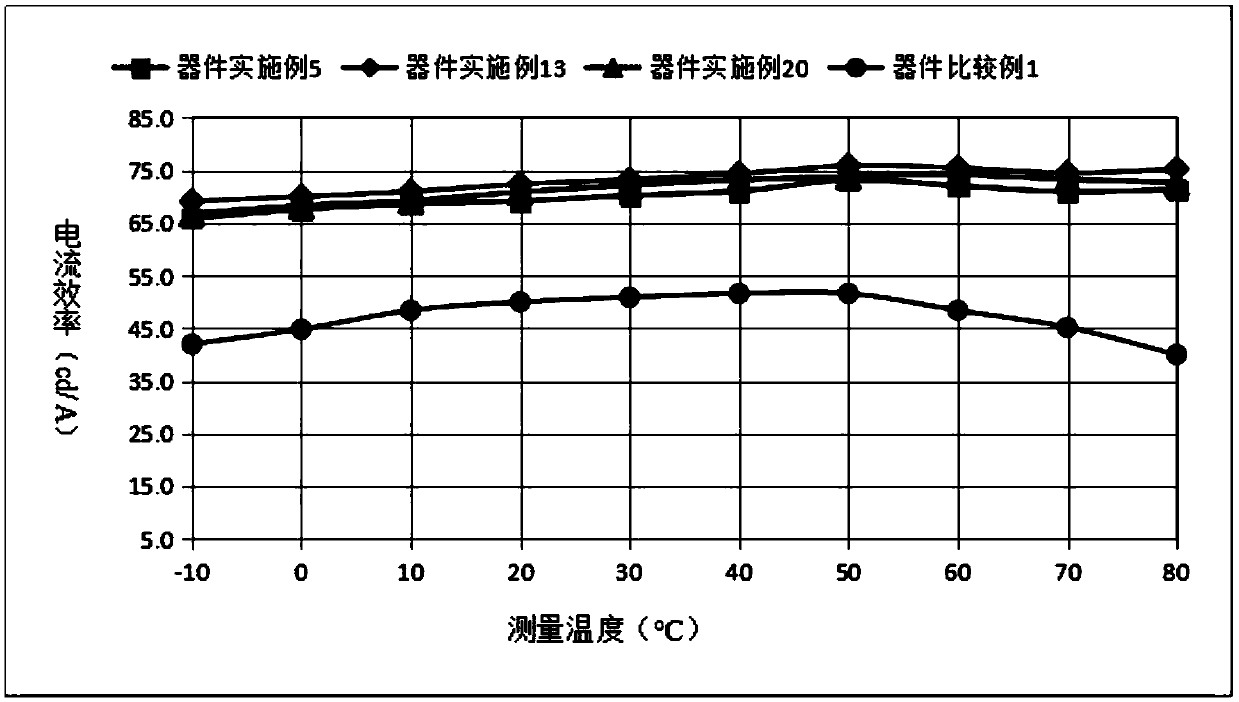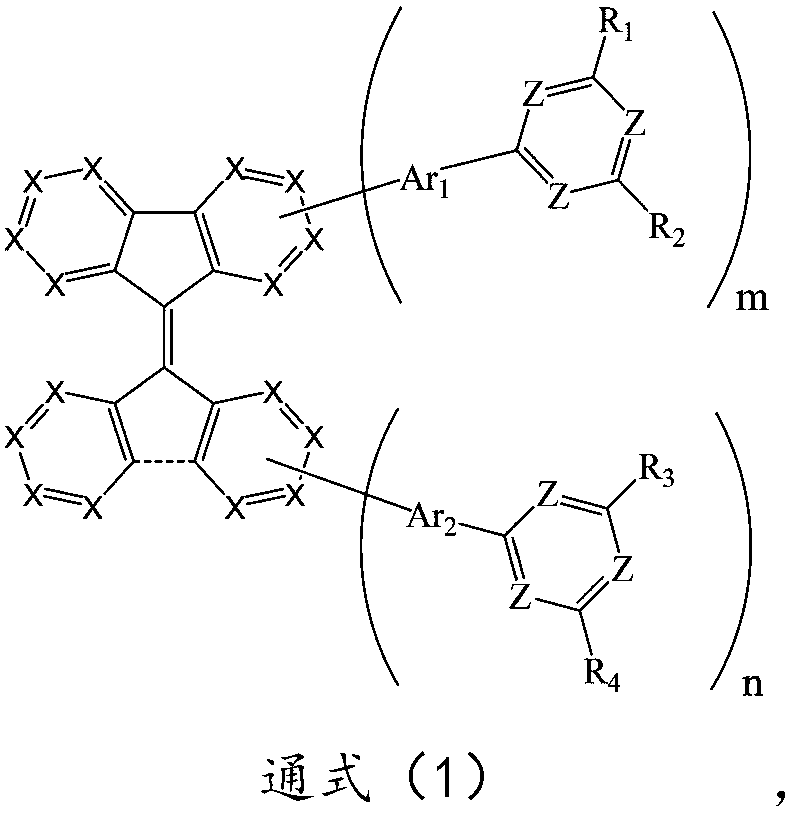Azabenzene modified organic compound and application thereof
An organic compound, azabenzene technology, applied in organic chemistry, electrical solid state devices, semiconductor devices, etc., can solve different problems and achieve the effect of maintaining film stability, distribution balance, and high film stability
- Summary
- Abstract
- Description
- Claims
- Application Information
AI Technical Summary
Problems solved by technology
Method used
Image
Examples
preparation example Construction
[0069] Preparation of Intermediate I:
[0070]
[0071] In a 250mL three-necked flask, feed nitrogen, add 0.04mol of raw material A-1, 150mL of THF, 0.05mol of raw material B-1, 0.0004mol of tetrakis(triphenylphosphine) palladium, stir well, and then add 0.06mol of K 2 CO 3 Aqueous solution (2M), heated to 80 ° C, reflux reaction for 10 hours, sampling plate, reaction complete, naturally cooled, extracted with 200mL dichloromethane, separated layers, the extract was dried with anhydrous sodium sulfate, filtered, and the filtrate was rotary evaporated, Purified by silica gel column to obtain intermediate C-1; HPLC purity 99.6%, yield 80.4%. Elemental analysis structure (molecular formula C 9 h 5 Cl 2 N 3 ): theoretical value C, 47.82; H, 2.23; Cl, 31.36; N, 18.59; test value: C, 47.81; H, 2.23; Cl, 31.36; N, 18.60. ESI-MS(m / z)(M + ): The theoretical value is 224.99, and the measured value is 225.10.
[0072]
[0073] In a 250mL three-necked flask, nitrogen gas...
Embodiment 1
[0086]
[0087] In a 250mL three-necked flask, nitrogen gas was introduced, 0.01mol of raw material J-1, 150mL of THF, 0.015mol of intermediate I-1, 0.0001mol of tetrakis(triphenylphosphine) palladium were added, stirred evenly, and then 0.02mol of K 2 CO 3 Aqueous solution (2M), heated to 80 ° C, reflux reaction for 15 hours, sampling point plate, complete reaction, natural cooling, extracted with 200mL dichloromethane, separated layers, dried the extract with anhydrous sodium sulfate, filtered, and the filtrate was rotary evaporated, The target compound 1 was obtained by using petroleum ether as the eluent and purifying on a silica gel column; the HPLC purity was 99.1%, and the yield was 76.8%. Elemental analysis structure (molecular formula C 48 h 30 N 4 O): theoretical value C, 84.93; H, 4.45; N, 8.25; O, 2.36; tested value: C, 84.91; H, 4.46; N, 8.23; ESI-MS(m / z)(M + ): The theoretical value is 678.24, and the measured value is 678.25.
Embodiment 2
[0089]
[0090] Compound 1 was prepared according to the synthesis method of compound 93, except that intermediate I-1 was replaced by intermediate I-2, and the purity of target compound 1 was 99.3%, and the yield was 78.1%. Elemental analysis structure (molecular formula C 42 h 28 N 2 ): theoretical value C, 89.97; H, 5.03; N, 5.00; test value: C, 89.96; H, 5.05; N, 5.01. ESI-MS(m / z)(M + ): The theoretical value is 560.23, and the measured value is 560.21.
PUM
 Login to View More
Login to View More Abstract
Description
Claims
Application Information
 Login to View More
Login to View More - R&D
- Intellectual Property
- Life Sciences
- Materials
- Tech Scout
- Unparalleled Data Quality
- Higher Quality Content
- 60% Fewer Hallucinations
Browse by: Latest US Patents, China's latest patents, Technical Efficacy Thesaurus, Application Domain, Technology Topic, Popular Technical Reports.
© 2025 PatSnap. All rights reserved.Legal|Privacy policy|Modern Slavery Act Transparency Statement|Sitemap|About US| Contact US: help@patsnap.com



